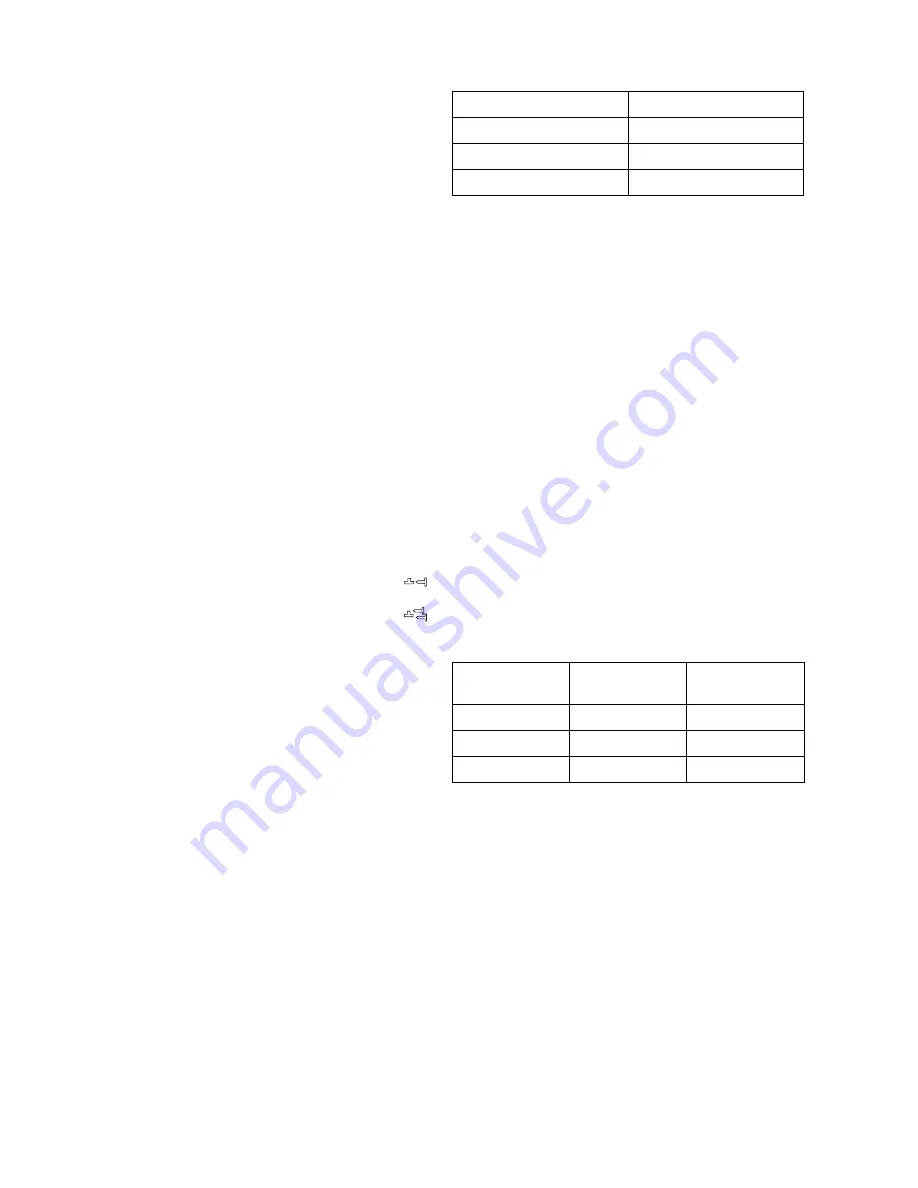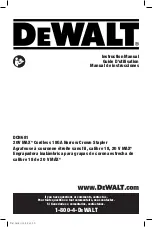
10
Connecting air hose
Slip the air socket of the air hose onto the air fitting on the
nailer. Be sure that the air socket locks firmly into position
when installed onto the air fitting. A hose coupling must
be installed on or near the tool in such a way that the
pressure reservoir will discharge at the time the air sup-
ply coupling is disconnected.
OPERATION
CAUTION:
• Make sure all safety systems are in working order
before operation.
1.
To drive a nail, you may place the contact element
against the workpiece and pull the trigger, or
2.
Pull the trigger first and then place the contact ele-
ment against the workpiece.
(Fig. 12 & 13)
• No. (1) method is for intermittent nailing, when you wish
to drive a nail carefully and very accurately. No. (2)
method is for continuous nailing.
CAUTION:
• However when the tool is set to the “Intermittent Nail-
ing” mode, WITH THE TRIGGER HELD IN A HALF-
PULLED POSITION, an unexpected nailing could
occur, if contact element is allowed to re-contact
against the workpiece or the other surface under the
influence of recoil.
In order to avoid this unexpected nailing, perform as fol-
lows;
A. Do not place the contact element against the work-
piece with excessive force.
B. Pull the trigger fully and hold it on for 1 – 2 seconds
after nailing.
• For No. (1) method, set the change lever to the
position.
For No. (2) method, set the change lever to the
position.
After using the change lever to change the nailing
method, always make sure that the change lever is
properly set to the position for the desired nailing
method.
(Fig. 14 & 15)
Nailing of steel plate (Fig. 16 & 17)
WARNING:
• Use 2.3 mm or less steel for C-shaped one.
The tool will bounce severely and a nail struck back,
causing serious injuries.
• Use hardened nails only for steel plate.
Using other purposed nails may cause serious injuries.
• When nailing, hold the tool so that it stands upright to
the driving surface.
Slanted nailing may cause nails to strike back, causing
serious injuries.
• When fastening a corrugated zinc plate on the C-
shaped steel, use 0.7 mm or less thick plate and
32 mm long hardened nails. Failure to do so may cause
nails to strike back, causing serious injuries.
• Do not use the tool for nailing on ceiling or roof.
Choose and use nails more than 10 mm longer than total
thickness of all workpiece to be fastened by referring to
the table below.
CAUTION:
• Depending on the hardness and total thickness of all
workpiece in combination to be fastened, enough fas-
tening may not be obtained. Nailing on steel plate to
excessive depth may extremely reduce the fastening
force. Before nailing, adjust the nailing depth properly.
• In the nailing on the steel plate, the driver may be
clogged due to susceptibility to wear. When it is worn,
sharpen it or replace it with a new one.
Nailing of concrete (Fig. 18)
WARNING:
• Use hardened nails only for concrete.
Using other purposed nails may cause serious injuries.
Do not nail directly on the concrete or do not use to fas-
ten directly the steel plate to the concrete. Failure to do
so may cause concrete fragments to fly off or nails to
strike back, causing serious injuries.
• When nailing, hold the tool so that it stands upright to
the driving surface.
Slanted nailing may cause concrete fragments to fly off
or nails to strike back, causing serious injuries.
• Do not use on the surface that objects hang from, such
as area where hangers for sewer pipe, dust pipe etc.
are set up.
Choose and use nails so that the penetration amount into
concrete ranges 10 mm – 15 mm by referring to the table
below.
CAUTION:
• Use this tool only for soft concrete built up not so long
before. Using on the hard concrete may cause nail
bending or nailing to insufficient depth.
• When the penetration amount into concrete comes to
more than 15 mm, nailing to the sufficient length may
not be obtained.
Cutting off the sheet (Fig. 19)
CAUTION:
• Always disconnect the hose before cutting off the
sheet.
Tear off the output sheet in the direction of the arrow
when using the sheet collated nails.
Air exhaust (Fig. 20)
Air exhaust direction can be changed easily by rotating
the exhaust cover. Change it when necessary.
Material thickness (mm)
Nail length (mm)
10 – 27
38
15 – 30
45
15 – 38
50
Wood thickness
(mm)
Nail length (mm)
Concrete (mm)
25
38
Approx. 13
30
45
Approx. 15
35
50
Approx. 15











































